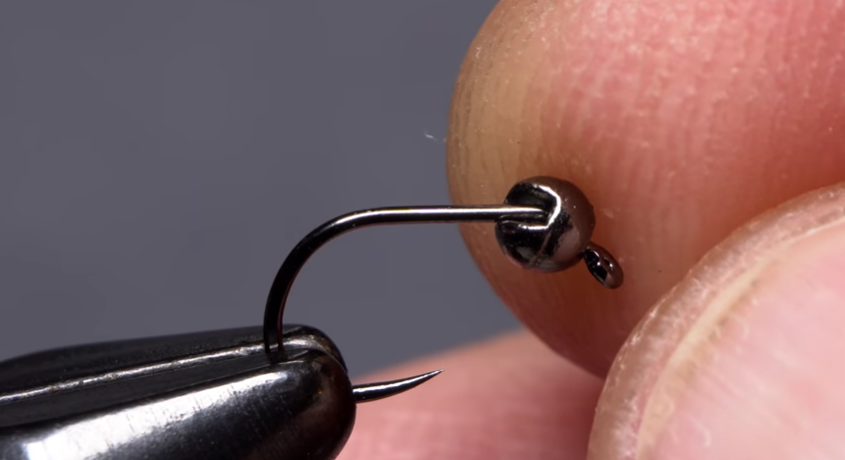Fall across North America generally means low and clear water, particularly on freestone trout streams where flows aren’t manipulated by upstream dams. And that means wary trout in skinny conditions.
Chasing fall trout during low water can be a lot of fun for sight-fishing, but fish are also on high alert for predators and, in heavily fished waters, they’re skeptical of just about anything they see.
Above, Tim Flagler ties the Black and Tan jig, a great searching pattern for low-water trout that’s both subtle and easily seen by fish throughout the water column. As Tim notes, the fly is designed to sink quickly with little in the way of resistance (not unlike a Perdigon nymph), and the contrast used in the tying helps fish pick the pattern out as it drifts near the bottom of the water column.
Small nymphs on heavily fished rivers are often preferred–they don’t stand out too much so as to look unnatural, but, when tied with some weight and some flash, they will get their share of looks from trout. The Black and Tan certainly meets those “requirements” — it’s good and heavy, and it has the bead head that gives it both weight and some shine. It would be a great drag fly on a Euro-nymphing rig, or it can be fished as the bottom fly on a two-nymph rig under an indicator.
This fly is also fairly simple at the vise, which means an angler can tie up several the night before a day on the water and not get too burned out or stress the eyes too badly (a real issue for those of getting older).
I would suggest one subtle alteration to this pattern — a thin coat of clear UV resin. Not only would it add to the fly’s “sinkability,” but it would give it just a bit more shine in the water. Just a thought.



